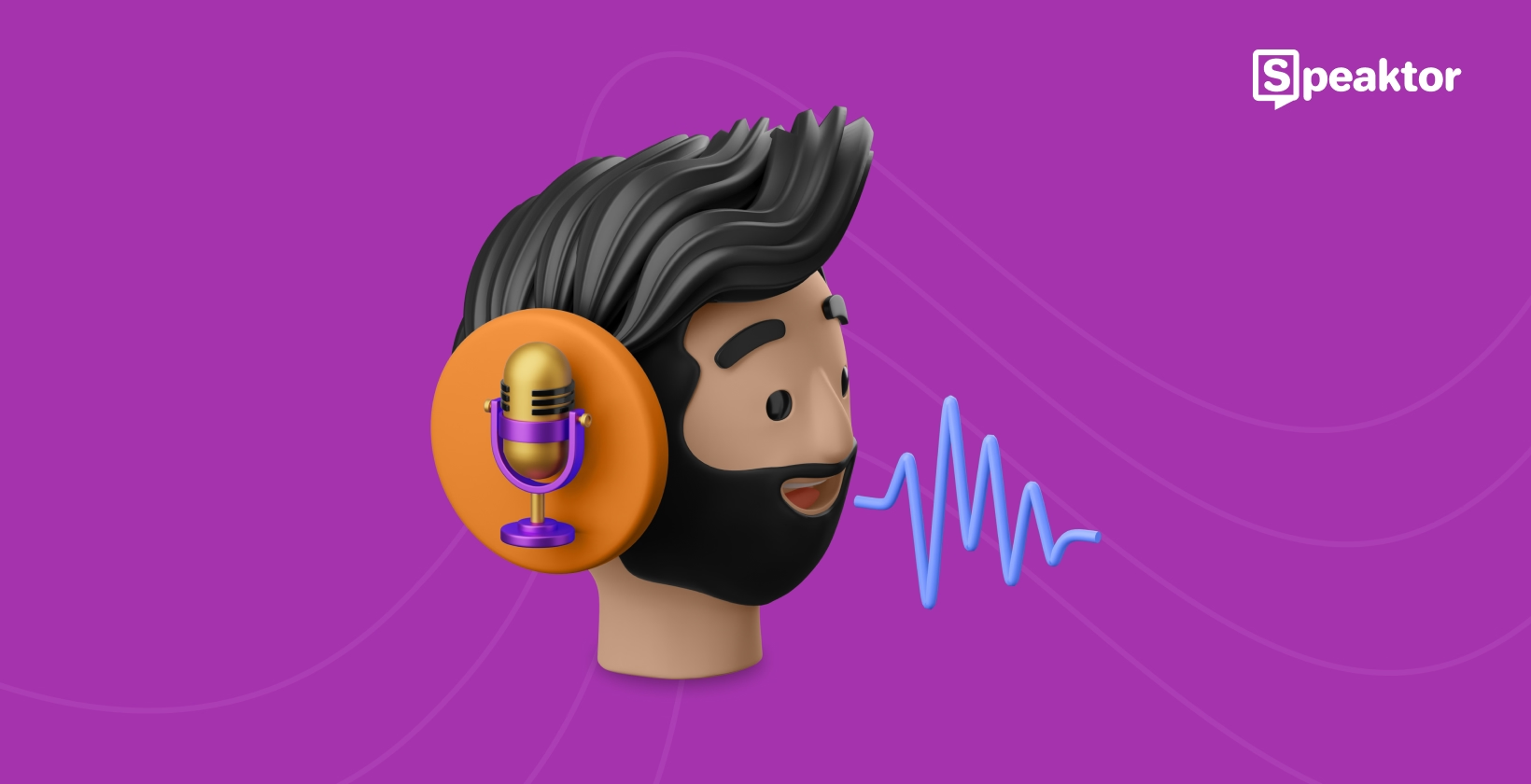In this guide, we'll explore the transformative world of speech generator technology and how it's revolutionizing content creation. As organizations increasingly need audio content, finding the right best speech generator solution has become essential. We'll examine the latest developments, compare leading solutions, and help you choose the perfect tool for your needs.
Understanding Speech Generation Technology
Modern speech generator software has come a long way from its robotic-sounding beginnings. Today's technology uses advanced AI and neural networks. These tools create voices that sound very much like human speech.
How Speech Generation Works
Today's automatic speech generator tools use advanced deep-learning algorithms to analyze text and produce human-like speech patterns. These systems understand context, emotion, and natural speaking rhythms.
The process starts with text analysis and moves through multiple stages of processing. AI models learn from large databases of human speech. This helps them copy natural patterns and adjust to different styles.
Each stage of the process contributes to creating voice content that sounds authentic and engaging. Modern speech synthesis systems manage many parts of speech that we often overlook. They understand punctuation and add emotional tones.
Evolution of Speech Generation
The journey of realistic speech generator technology shows remarkable progress over the years. What started as basic mechanical synthesis has evolved into sophisticated AI-powered solutions.
Early systems could only combine pre-recorded sound units, resulting in robotic-sounding speech. Modern engines use neural networks to understand context and emotion, producing much more natural results.
Recent breakthroughs have expanded the technology's applications significantly. These improvements have made multilingual speech generator tools valuable for professional content creation across various industries.
Key Components of Modern Speech Generators
Professional speech generation combines several sophisticated elements working together. The text analysis engine forms the foundation, understanding context and meaning in written content.
Voice modeling systems take this analyzed text and create appropriate speech patterns. Output processing ensures the final audio meets professional standards.
Quality control mechanisms maintain consistency across all content. This ensures reliable results whether you're creating a brief announcement or a full presentation.
Essential Features of Professional Speech Generators
Modern business needs demand specific features from speech generation tools. Understanding these key elements helps in choosing a solution that delivers consistent quality.
Voice Quality and Naturalness
Professional-grade voice quality goes beyond basic free speech generator functionality. Modern systems use neural networks to understand context and create natural-sounding speech.
These advanced systems capture appropriate emotional tones and maintain consistent quality. They deliver clear pronunciation while adapting to different content types and purposes.
Natural speech patterns come from analyzing and replicating human speaking characteristics. This includes proper pacing, appropriate pauses, and dynamic intonation that matches the content's intent.
Language Support and Accent Options
Global business demands comprehensive language capabilities. Professional speech generators must handle multiple languages with native-speaker quality.
Managing regional accents and cultural nuances helps content resonate with diverse audiences. The ability to switch seamlessly between languages while maintaining natural speech patterns is crucial for global organizations.
File Format Compatibility
Modern workflows require flexible format support. A professional speech generator software should handle common document formats like PDF, TXT, and DOCX.
Output options should include standard audio formats such as MP3 and WAV. This flexibility ensures the system fits easily into existing content creation processes.
Customization Options
Adaptability defines a truly professional speech generation system. Users should be able to select and customize voices to match their needs.
Controls for speed, pitch, and style help create the perfect output for each situation. This flexibility ensures the system can handle various content types while maintaining brand consistency.
Leading Speech Generator Solutions Compared
The market offers several sophisticated speech generation solutions. Each has unique strengths that suit different needs and use cases.
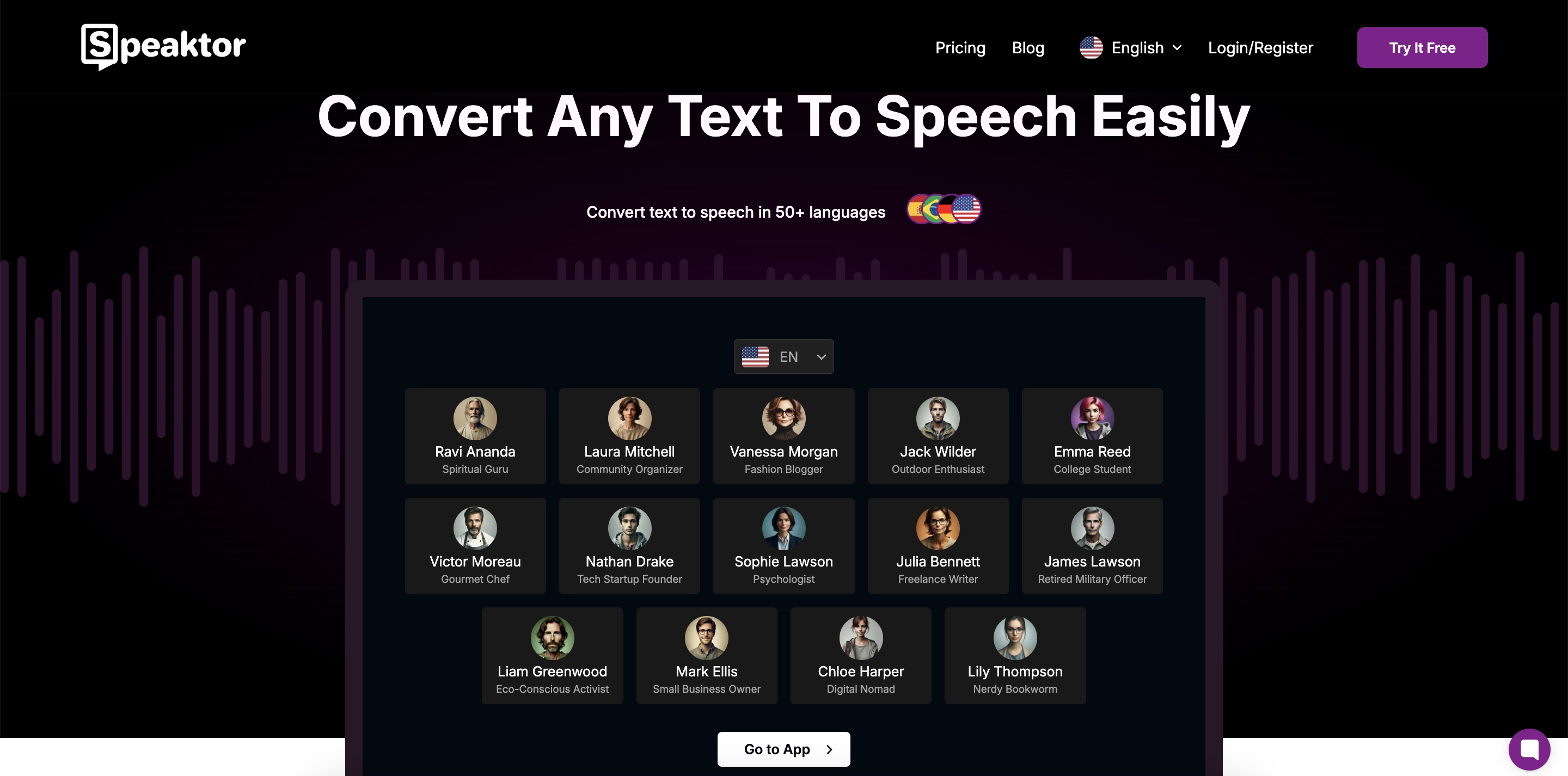
Speaktor's Comprehensive Solution
Speaktor leads the market with enterprise-level features designed for professional content creation. Its core strength lies in delivering professional-grade voice synthesis across more than 50 languages.
The platform's AI voiceover capabilities set new industry standards. Content creators can generate voice content from Excel data and assign multiple speakers while maintaining premium quality.
Speaktor's workspace organization focuses on security and efficiency. The platform provides secure file storage with role-based access control, enabling safe team collaboration.
File handling shows Speaktor's commitment to streamlined workflows. Users can process various formats, from PDF to DOCX, and receive output in standard audio formats. The platform also offers timestamp-enabled exports for precise content management.
Key advantages include:
- Professional voice quality across all supported languages
- Advanced AI voiceover with Excel integration
- Secure workspace management
- Comprehensive format support
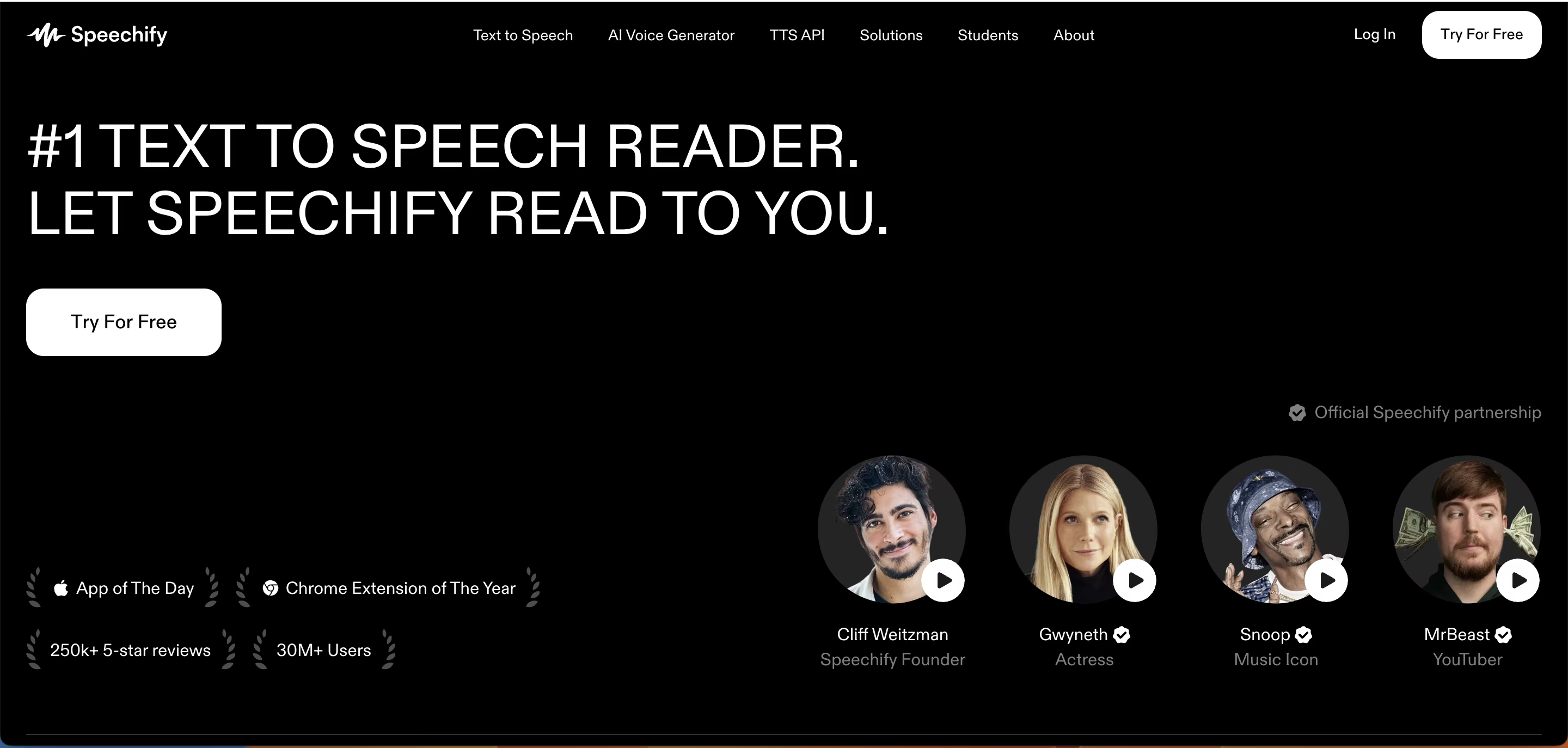
Natural Learning Platform: Speechify
Speechify specializes in education and accessibility applications. The platform creates natural-sounding voice content optimized for learning environments.
Its user-friendly interface offers sophisticated features like dynamic reading speed adjustment. Cross-platform synchronization ensures a seamless experience across devices.
The platform particularly excels in academic settings and accessibility support. Its features focus on enhancing the learning experience through optimized audio content.

Enterprise Solution: Amazon Polly
Amazon Polly leverages AWS infrastructure for enterprise-grade speech generation. Its neural text-to-speech engine delivers consistent quality output.
The service offers flexible pricing with a pay-as-you-go model. This makes it attractive for organizations with varying usage needs.
Integration with AWS services adds value for companies already using Amazon's ecosystem. The API-first architecture enables smooth integration with existing systems.
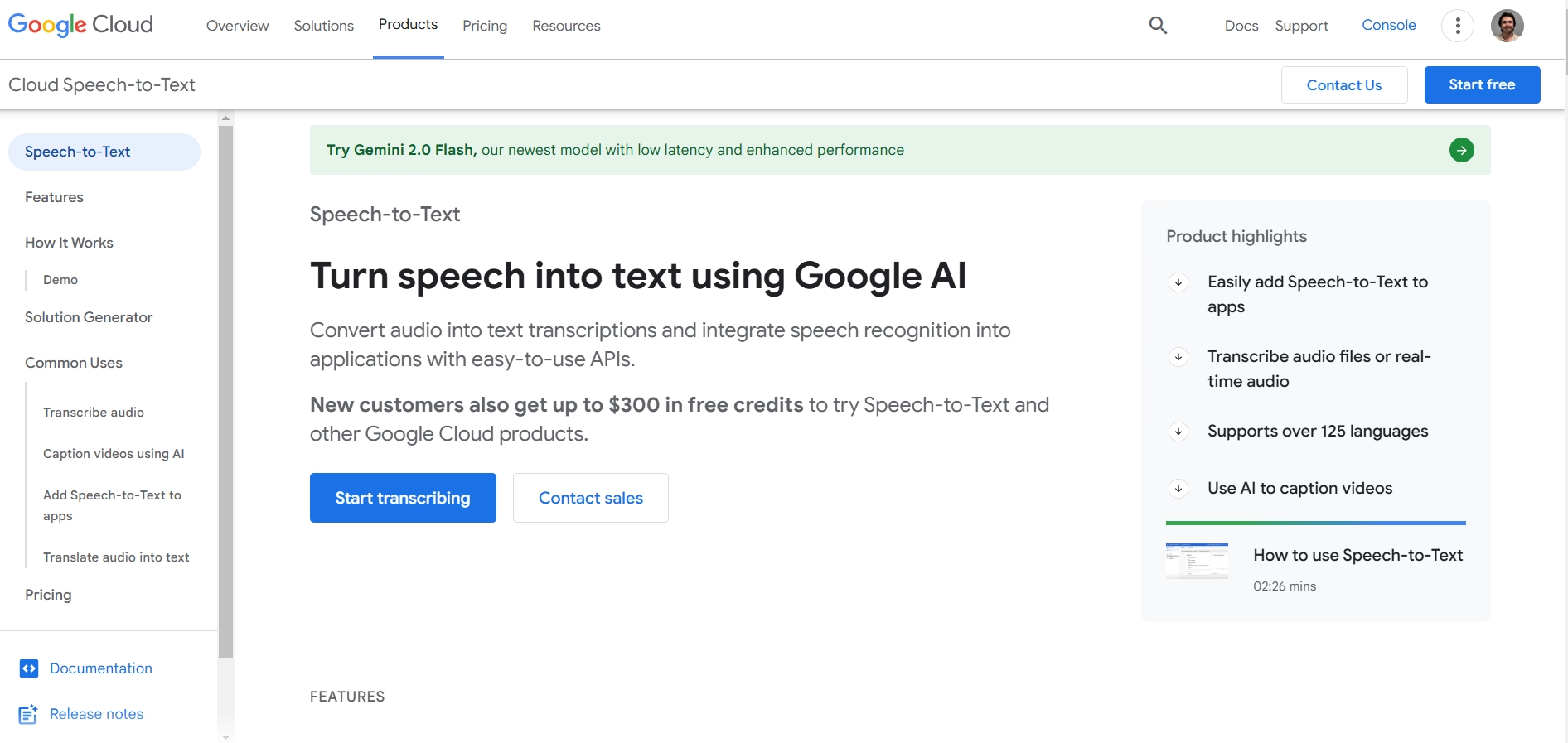
Cloud Platform: Google Cloud Text-to-Speech
Google emphasizes AI innovation and developer-friendly features. Their WaveNet-based voice synthesis technology produces high-quality output.
The platform offers extensive customization options through its API. Comprehensive documentation makes it appealing for development teams.
Multi-platform deployment support adds flexibility. Integration with Google Cloud Platform provides additional benefits for existing Google Cloud users
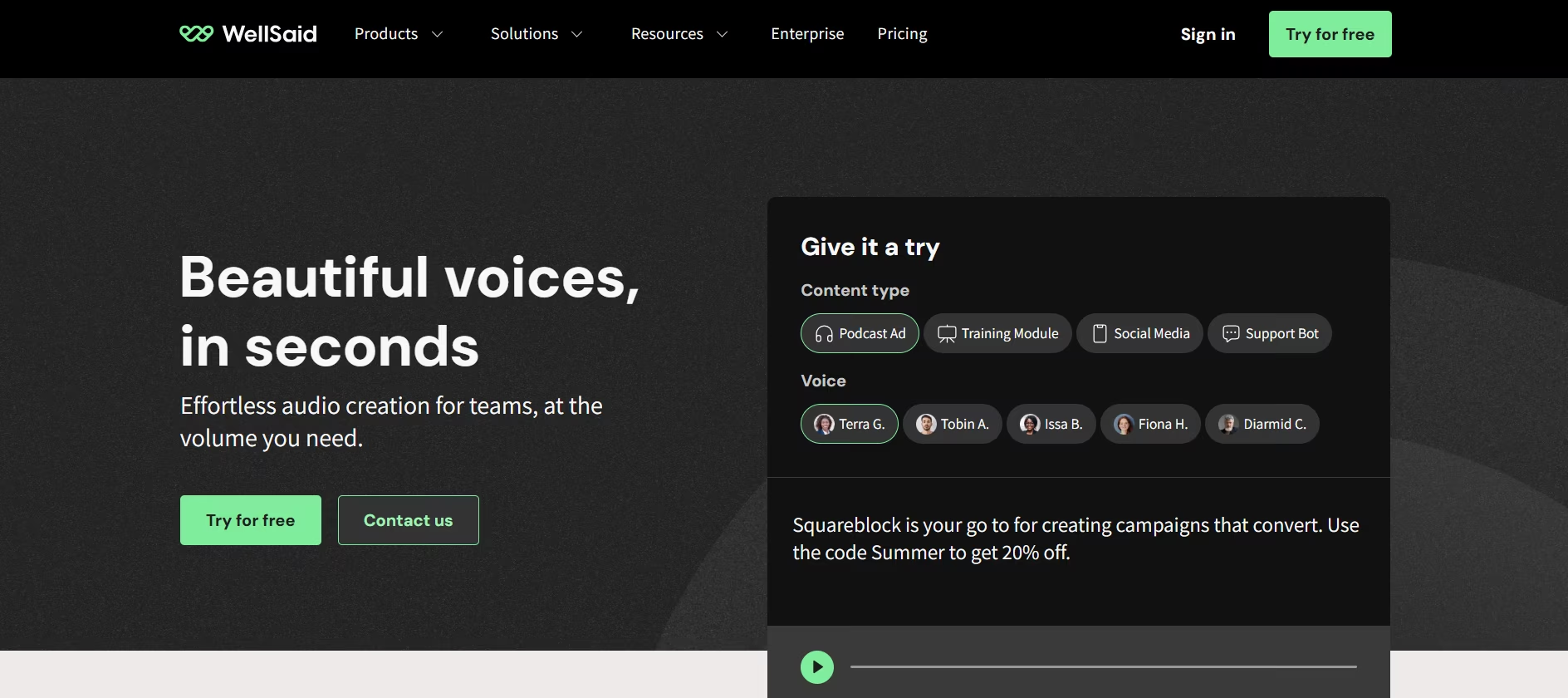
Studio Quality: WellSaid Labs
WellSaid Labs focuses on studio-quality voice production. Their AI voice cloning technology helps organizations create custom brand voices.
The platform includes robust collaboration tools for team workflows. This makes it valuable for organizations to produce professional voiceover content regularly.
Choosing the Right Speech Generator
Selecting a speech generation solution requires careful consideration of several factors. Let's explore the key aspects that influence this decision.
Assessing Your Needs
Start by evaluating your specific requirements. Consider your content volume, quality standards, and budget constraints.
Technical integration needs to play a crucial role. Think about how the solution will fit into your existing workflow.
Different use cases may require different features. For example, multilingual content needs robust language support, while branded content requires voice customization options.
Quality vs. Cost Considerations
Balance quality requirements with budget constraints. Consider both initial implementation costs and ongoing operational expenses.
Look beyond immediate costs to long-term value. Factor in time savings, quality improvements, and enhanced audience engagement.
ROI calculations should include both tangible and intangible benefits. Consider how the solution will impact your content creation efficiency.
Integration Requirements
Technical integration capabilities significantly impact implementation success. Consider API availability and security compliance requirements.
Support service quality can make a big difference. The chosen solution should work well with your existing systems while offering room for growth.
Documentation and technical resources matter. Ensure the platform provides the support your team needs for successful implementation.
Scalability Factors
Think about future growth when choosing a solution. Evaluate how the platform handles increased workloads.
Consider resource requirements as you scale. A solution perfect for current needs might become limiting as you grow.
Look for flexibility in feature expansion. Your needs may evolve, and your chosen platform should grow with you.
Maximizing Speech Generation Results
Success with speech generation technology requires attention to implementation and management. Here's how to get the best results.
Text Preparation Best Practices
Good results start with properly prepared text. Format your content appropriately and consider pronunciation requirements.
Maintain clear content structure throughout. Implement consistent quality control measures for your input text.
Create guidelines for content preparation. This ensures everyone on your team follows best practices.
Quality Optimization Techniques
Regular quality checks help maintain high standards. Pay attention to voice selection and output testing.
Monitor consistency across all content. Establish clear quality benchmarks for your generated audio.
Create feedback loops for continuous improvement. Use insights from each project to refine your processes.
Project Management Tips
Establish clear workflows for speech generation projects. Coordinate team efforts effectively.
Monitor progress and maintain quality standards. Regular check-ins help catch issues early.
Document successful processes for future reference. Share best practices across your team.
Common Pitfalls to Avoid
Watch for technical integration challenges. Address issues promptly to maintain workflow efficiency.
Monitor quality consistency carefully. Establish clear standards and regular quality checks.
Pay attention to resource allocation. Ensure you have the right tools and people for each project.
Conclusion
Speech generation technology has transformed how we create voice content. Choosing the right solution requires careful consideration of features, quality, and integration capabilities.
Speaktor stands out by offering professional-grade voice synthesis, extensive language support, and robust integration options. These features meet the demands of modern business communication effectively.
For organizations implementing speech generation technology, success comes from careful evaluation and planning. Consider your specific needs, available solutions, and implementation requirements.
Ready to transform your content into professional voice recordings? Explore Speaktor's advanced speech generation capabilities and experience the difference in quality and efficiency. Start creating engaging voice content today.
